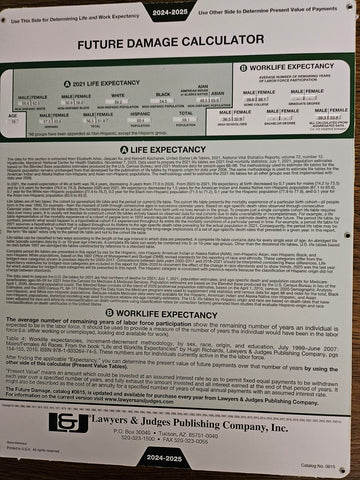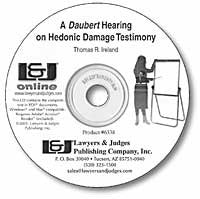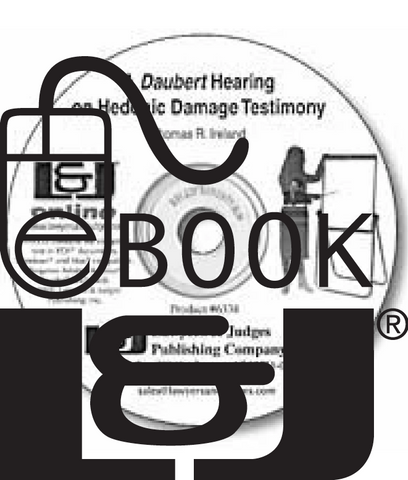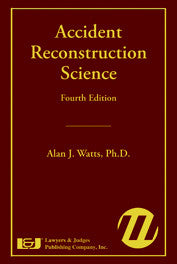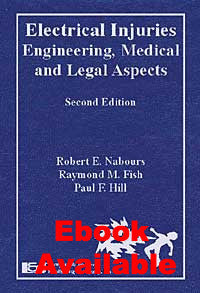
Electrical Injuries: Engineering, Medical and Legal Aspects, Second Edition
- Author: Robert E. Nabours, Raymond M. Fish, Paul F. Hill
- ISBN 10: 1-930056-71-0
- ISBN 13: 978-1-930056-71-8
- Copyright Date Ed: January 21, 2004
- Pages: 693 pages
- Binding Information: Hardcover
- Size: 6 ✕ 9 Inches (US)
The most complete summary of electrical injury issues for the electrical injury litigator and investigator. Electric currents and electromagnetic radiation, both ionizing and nonionizing, can produce harmful biological effects in humans; these effects are the subject of an ever growing number of lawsuits. This book provides an introduction to the biological effects of electric currents and EMFs and the state of engineering and medical knowledge.
Part I explains what forensic electrical engineers do and how they can assist attorneys in handling electrical injury cases. It also covers electrical codes and standards, basic electrical systems, and reconstructing the electrical accident.
Part II covers the medical aspects of electrical injuries, including the consequences of electrical injury on the body, EKGs and pacemakers, accident reconstruction in electrical injury cases, common sources of electrical injury, and relevant medical literature. This section also explains how electrical impulses control and influence muscle cells throughout the body as well as the pumping of blood throughout the heart.
Part III is a survey of appellate decisions in cases involving electrical injuries. It gives the attorney, engineer and accident reconstructionist a valuable resource for investigating, evaluating and settling or litigating claims arising from electrical injuries.
TOPICS INCLUDE
- The forensic electrical engineer
- Standards and the law
- Electrical codes and standards
- Introduction to basic electrical systems
- Electrical energy effects on humans
- Electrical product failure
- Fires of electrical origin
- Illumination
- Lightning
- Case studies
- Basic concepts in electrical injury
- The heart
- Electrical stimulation of the heart
- Patient monitoring and measurements
- The respiratory system
- Glossary: Bioengineering and medicine
- Understanding the information in medical records
- Researching the medical literature
- Determining whether an electrical accident is the etiology of a medical condition
- Accident reconstruction in electrical injury cases
- The skin and musculo-skeletal systems
- The nervous system and sensory organs
- The cardiovascular system
- Digestive and urinary systems
- Electroconvulsive therapy
- Fetal injury
- Psychological effects
- Atmospheric phenomena
- Fences
- Microwave oven injury
- Overhead power line contact
- Stun guns, TASERs and related devices
- Suicide and homicide
- Compliance with codes, regulations, statutes, and ordinances
- Product liability and strict liability
- Power line accidents
- More power line accidents and miscellaneous cases
- Trespassing adults and minors
- Liability for power surges, outages, and fires
- Power lines and cancer litigation: Is it junk science?
- Recent settlements and verdicts
Table of Contents
Electrical InjuriesEngineering, Medical and Legal Aspects, Second Edition
Robert E. Nabours, Ph.D., PE
Raymond M. Fish, Ph.D., M.D., FACEP
Paul F. Hill, Esq.
Preface
Introduction
Part 1. Forensic Electrical Engineering
Robert E. Nabours, Ph.D., PE
Chapter 1. The Forensic Electrical Engineer
1.1 The Engineering Expert Witness
1.2 The Forensic Electrical Engineer's Clients
1.3 The Forensic Electrical Engineer's Function
A. Preliminary investigation
B. Detailed technical investigation
C. Final report
D. Discovery
E. Testifying at trial
F. Daubert and Kumho
Endnotes
Chapter 2. Standards and the Law
2.1 Terminology
2.2 Legality and Liability
2.3 A Brief History of Electrical Standards
2.4 International Electrical Standards
2.5 Voluntary Standards
Endnotes
Chapter 3. Electrical Codes and Standards
3.1 American National Standards Institute (ANSI)
3.2 National Electrical Code (NEC and NFPA)
3.3 National Electrical Safety Code (ANSI and IEEE)
3.4 IEEE Standards
3.5 Electronic Industries Association (EIA)
3.6 National Electrical Manufacturers Association (NEMA)
3.7 Underwriters Laboratories (UL)
3.8 Government Regulatory Standards
A. Consumer Products Safety Commission (CPSC)
B. Federal Communications Commission (FCC)
C. Nuclear Regulatory Commission (NRC)
D. Occupational Safety and Health Administration (OSHA)
3.9 Uniform Building Code (UBC)
3.10 State and Local Standards
3.11 The Illuminating Engineering Society of North America (IESNA)
Endnotes
Chapter 4. An Introduction to Basic Electrical Systems
4.1 Electrical-Hydraulic Analogy
4.2 Ohm's Law
4.3 Basic Electrical Circuits
4.4 Alternating Current Circuits
4.5 Common Electrical Power Systems
4.6 Wiring Methods and Materials
4.7 Protection Devices
4.8 Common Appliances and Equipment
Endnotes
Chapter 5. The Effects of Electrical Energy on Humans
5.1 Introduction
5.2 Direct Contact Effects of Electricity on Humans
5.3 Electroconvulsive Therapy (EST or ECT)
A. Types of Electric Current Used to Induce Seizures
B. Complications
C. Making ECT safer and more effective
5.4 Power Line Contact Accidents
5.5 Directly Induced Current Flow within the Human Body
5.6 Effects of Ionizing Electromagnetic Radiation
5.7 Effects of Non-Ionizing Electromagnetic Radiation
5.8 Effects of Extremely Low Frequency EMFs
Endnotes
References
Chapter 6. Electrical Products and Failures
6.1 Introduction
6.2 Insulators
6.3 Switches
6.4 Relays
6.5 Electric Fences
A. Grounding
B. Sparks from electric fences
C. Fence controllers with continuous AC output
D. Respiratory arrest and death from continuous AC fence current
6.6 Microwave Oven Injuries
A. Nerve injury from microwave radiation
B. Steam burns
C. Burns caused by microwave energy
D. Case reports of children put in microwave ovens
E. Investigation and treatment of possible microwave burns
6.7 Stun Guns, TASERs and Related Devices
A. Stun guns
B. TASERs: Construction and output
C. Effects on animals and people
D. Debate concerning lethal effects
6.8 Electronic Devices
6.9 Sensors: General
6.10 Thermal Sensors
6.11 Pressure Sensors
6.12 Light Sensors
6.13 Chemical Sensors
6.14 Biosensors
6.15 Smart Sensors
Endnotes
References
Chapter 7. Fires of Electrical Origin
7.1 Introduction
7.2 Electrical Ignition: Arcs
7.3 Electrical Ignition: Overheating
7.4 Physical Evidence
7.5 Incendiary Electrical Fires
Appendices
References
Chapter 8. Illumination
8.1 Introduction
8.2 Physics of Light
8.3 Visual Environment and Visibility
8.4 Lighting Design
8.5 Slips, Falls and Safety
8.6 Vehicular Accidents
8.7 Emergency Lighting
8.8 Nighttime Photography
Endnotes
Chapter 9. Lightning
9.1 Introduction
9.2 Physics of Lightning
9.3 Characteristics of Lightning
9.4 Ball Lightning and Related Phenomena
A. Incidence
B. Properties observed
C. Ball lightning associated with man-made electric power sources
D. Experimentally produced ball lightning
E. Types of ball lightning
F. Reported injuries from ball lightning
9.5 Life Safety
9.6 Lightning-Related Injuries
A. Being struck by lightning is often not fatal
B. Types of lightning contact
C. Telephone-related lightning injury
D. Thermal and mechanical shock wave injury
E. Cardiac complications of lightning injury
F. Neurological sequelae of lightning strike
G. Vascular events following lightning injury
H. Myoglobinuria
I. Anatomic findings in brain injury caused by lightning
J. Brain injury, as caused by lightning
K. Eye and ear injuries from lightning
L. Skin injury
M. Fetal injuries
N. Autopsy considerations
9.7 Structural Systems Protection
9.8 Electrical Systems Protection
Endnotes
References
Chapter 10. Case Studies
10.1 Introduction
10.2 A Case of Power Line Electrocution by a Rabbit
10.3 A Case of the Good Samaritan Fire
10.4 A Case of a Utility∂s Failure to Respond to a Request for Help
10.5 A Case of Severe Electrical Shock in the Shower
10.6 A Case of an Attractive Nuisance Substation
10.7 A Case of Mobile Home Fire due to Faulty Wiring
10.8 A Case of Careless Tree Trimming
10.9 A Case of an Exploding Bus Duct
10.10 A Case of EMF Concern for a New Power Line
10.11 A Case of an Exploding Voltmeter
10.12 A Case of Inadequate Illumination
10.13 A Case of a Misdiagnosed Electrocution
10.14 A Case of a Faulty GFCI System
10.15 A Case of a Faulty Control System
10.16 A Case of a Battery Explosion
10.17 A Case of a Shocking Kitchen Appliance
10.18 A Case of Children Climbing Trees
10.19 A Case of Interference with OH Lines by a High-Profile Vehicle
10.20 A Case of Utility Failure to Inspect
Endnotes
Part 2. Medical Evidence of Electrical Injuries
Raymond M. Fish, Ph.D., M.D., FACEP
Chapter 11. Basic Bioengineering Relevant to Electrical Accidents
11.1 Factors Related to Electrical Injury
A. Thermal injury
B. Voltages causing electrical injury
C. Skin resistance
11.2 Stimulation of Excitable Cells
11.3 Death Occurring without Skin Burns
References
Chapter 12. Electrical Stimulation of the Heart
12.1 The Natural Pacemaker and Signal Conduction System of the Heart
12.2 Fibrillation: Atrial and Ventricular
12.3 Defibrillation
12.4 Pacemakers for Bradycardia (Slow Heartbeat)
A. Transvenous pacemaker insertion
B. Types of pacemakers
C. Outside interference and triggering
D. Programming and controlling pacemakers
E. Failure to pace
12.5 Failure to Detect Cardiac or Respiratory Arrest Because of Pacemaker Signals
12.6 MRI (Magnetic Resonance Imaging) for Patients with Pacemakers
A. MRI-pacemaker interactions
B. Lessening the risk
References
Chapter 13. Understanding the Information in Medical Records
13.1 The Importance of Medical Record Information
A. Forensic issues
B. Biomedical engineering, marketing and health care delivery issues
13.2 Difficulties in Obtaining Information
13.3 Information that Cannot Be Used
A. Mental health records
B. Peer review and quality assurance
13.4 Sources of Information
13.5 History of an Accident
A. Sources of inaccuracy in histories from witnesses and medical personnel
B. Sources of inaccuracy in histories given by patients
13.6 The Mechanism of Injury
13.7 Time Factors
A. Organizing the information in records for analysis
B. Medical conditions change over time
C. Test results
D. Inaccurate and inconsistent recording of times
13.8 Vital Signs
13.9 Preliminary Reports
13.10 Who Sees What
13.11 The Methodology of Medical Diagnosis
13.12 Misleading Test Results
A. Arterial blood gas reports
B. Pulse oximeters
C. Carbon monoxide
D. Radiology reports
E. Units
F. Muscle damage
G. Respiratory effects of electrical injury
13.13 Death Certificates and Autopsy Reports
13.14 Conclusion
References
Chapter 14. Determining Whether an Electrical Accident is the Etiology of a Medical Condition
14.1 A Previous Evaluation Protocol
14.2 Modifying the Protocol
14.3 Determination of Medical Etiology
14.4 Epidemiological Studies Are Not Likely to Be Done
A. Injuries are relatively rare
B. The amount of current involved in accidental injuries is not accurately known
C. Experimental studies are difficult to perform
D. Current determines clinical effect or injury
E. Current is usually known and well controlled in laboratory studies
F. Current is usually not known in clinical reports1
14.5 Autopsy-Related Considerations
A. Medical examiner and coroner systems
B. The autopsy
C. Evolution of rigor mortis
References
Chapter 15. Accident Reconstruction in Electrical Injury Cases
15.1 Introduction
15.2 Tasks in Electrical Injury Accident Reconstruction
A. Task 1: Determine current flow
B. Task 2: Determine expected medical effects of the electrical current
C. Task 3: Determine the nature of the injury actually sustained
D. Task 4: Compare the expected effects of current flow to the actual injury
E. Task 5: Consider that the person∂s condition is due to disease or other processes unrelated to the electrical injury
F. Task 6: Cite references from the scientific literature that support and illustrate the consultant∂s opinions
15.3 Conclusions
References
Chapter 16. Burns, Muscle, Bone and Joint Injuries from Electricity
16.1 Burns
A. The clinical diagnosis of burns
B. Factors related to the formation of burns
C. Types of burns
D. Clinical and pathological aspects of burns
E. Microscopic examination of current marks
F. Skin metallization
G. Skin lesions that may be mistaken for electric marks or burns
16.2 Muscle Injury
A. Effects on muscle of direct and alternating current
B. Detection of muscle injury by blood tests
C. Detecting the location of deep muscle injury
16.3 Bone and Joint Injury
A. Mechanisms of orthopedic injury
B. Delayed recognition of fractures following electrical injury
C. Melting of bone
D. Spinal fractures
E. Injury of the skull
F. Fractures and dislocations of the shoulders
References
Chapter 17. Electrical Injuries to the Nervous System and Sensory Organs
17.1 Brain Injury
A. Mechanisms of brain injury
B. Involuntary movement disorders
C. High voltage contact to the head
D. Case reports
E. Conclusions
17.2 Spinal Cord Injury
A. Cord lesions from hand-to-hand electric contact
B. Delayed onset of spinal cord and brain dysfunction: Multiple case listing
C. Case reports
17.3 Peripheral Nerves
A. Mechanisms of electric injury to peripheral nerves
B. Specific peripheral nerve lesions
C. Case example of delayed peripheral nerve injury
17.4 Reflex Sympathetic Dystrophy and Causalgia
A. RSD is a syndrome
B. Criteria for diagnosing reflex sympathetic dystrophy
C. Types of nerves affected in reflex sympathetic dystrophy
D. Skin lesions in RSD
E. Delayed onset of reflex sympathetic dystrophy
F. RSD following electric injury
G. RSD following lightning injury
H. Causalgia due to electric current
I. Definitions of some signs and symptoms
J. Abnormal response to cold in RSD
K. Edema (swelling) caused by electrical injury and RSD
L. Nerve entrapment: A sometimes-late complication of RSD
M. Complex regional pain syndrome: A new name for RSD
17.5 Ear Injury
A. Incidence
B. Mechanisms of injury
17.6 Eye Injury
A. Mechanisms of injury
B. Specific injuries
References
Reflex sympathetic dystrophy and causalgia
Chapter 18. Cardiac and Respiratory Effects of Electrical Injury
18.1 Introduction
A. Pulmonary injury
B. Myocardial infarction following electrical injury
C. Myocardial dysfunction from electrical injury
D. Proof of myocardial (heart muscle) injury
E. Cardiac muscle injury, with survival of the patient
F. Case examples of survival after current flow through the heart
18.2 Vascular Injury
A. Delayed arterial thrombosis following low-voltage injury
B. Vascular injuries from high voltage
C. Modern imaging methods
18.3 Conscious Awareness During Fatal Electric Injury
A. Immediate cardiac and respiratory effects of various amounts of current
B. Mechanisms of death
C. Cardiac arrest
D. Consciousness and awareness during cardiac arrest
E. Respiratory arrest
F. Absence of burns in fatal electric injury
G. Conclusions
References
Chapter 19. Electrical Injuries to the Digestive and Urinary Systems
19.1 Gastrointestinal Injury
A. Direct injury of intra-abdominal organs
B. Indirect effects on the gastrointestinal system
C. Treatment of abdominal electric injuries
19.2 Metabolic, Renal and Hepatic Complications
A. The liver
B. The kidneys
C. Blood gas changes due to respiratory arrest
References
Chapter 20. Maternal and Fetal Electrical Injuries
20.1 Incidence of Fetal Death with Apparently Minor Maternal Electrical Injury
A. A study finding a high probability of injury
B. A study finding a low probability of injury
20.2 Fetal Movements: A Sign of Fetal Well-Being
20.3 Causal Relationships and the Temporal Sequence of Events
20.4 Possible Mechanisms of Fetal Injury
20.5 Case Reports of Fetal Death
A. Low voltage (220 volts or less) with minor maternal injury
B. Cranial nerve and musculoskeletal abnormalities
C. Vasospasm and focal cerebral ischemia produced experimentally
D. Electric fence contact and fetal death
E. Placental abruption following electric injury
F. Lightning strike in pregnancy
20.6 Treatment of Electrical Injury in Pregnancy
20.7 Information Relevant to Interpreting Case Reports
A. Incidence of fetal deaths in the United States
B. Factors affecting the incidence of fetal death
References
Chapter 21. Psychological Effects of Electrical Injury
21.1 Incidence
21.2 Psychological Effects of Uncertain Etiology
21.3 Similarities Between Depression and Suspected Brain Injury of Uncertain Origin
References
Part 3. Legal Aspects of Electrical Injuries
Paul F. Hill, Esq.
Chapter 22. Compliance with Codes, Regulations, Statutes and Ordinances
Chapter 23. Product Liability and Strict Liability
Chapter 24. Power-Line Accidents
24.1 Introduction
24.2 Cranes, Cherry Pickers and Grain Augers
24.3 Pipes, Poles and Handles
24.4 Ladders and Scaffolding
24.5 TV and CB Antennas
24.6 Boats, Aircraft and Balloons
24.7 Tree Trimmers and Climbers
24.8 Buried Cables
Chapter 25. More Power-Line Accidents and Some Miscellaneous Cases
25.1 Roofers, House Movers and Others
25.2 Stray Voltage on Dairy Farms
25.3 Miscellaneous Duties of a Power Company
Chapter 26. Trespassing Adults and Minors
Chapter 27. Liability for Power Surges, Outages and Fires
About the Authors
Index

